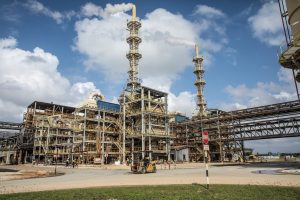Malaysia is in talks with China on a rare earths processing refinery project that could see sovereign wealth fund Khazanah Nasional partnering with a Chinese state-owned company, Reuters reported yesterday.
The news agency cited four sources in Malaysia with knowledge of the talks, which it stated are at an “early” stage. Two of these sources told Reuters that Beijing “is ready to swap its technology for access to Malaysia’s untapped rare earths reserves, seeking to limit competition from Australian rival Lynas Rare Earths, which has a processing plant in the central state of Pahang.”
Neither China’s State Council nor the Malaysian Ministry of Natural Resources responded to Reuters’ requests for comment. Khazanah’s chief investment officer, Hisham Hamdan, did not comment about the proposed project, but “acknowledged that rare earths were among the industries being explored by the fund.” Rare-earth elements are a group of 17 chemical elements that play a crucial role in high-tech manufacturing, including semiconductor chips, electric vehicles, military equipment, and green energy technologies.
According to its sources, Reuters reported that the proposed refinery would process both light and heavy rare earths. The deal is no foregone conclusion, however. Sources cited in the Reuters report suggested that there are several significant obstacles to the project. One is China’s concern about whether Malaysia would be able to supply enough raw material for the plant. Another involves Malaysia’s concerns about the potential environmental impact and regulatory hurdles, “since mining activities typically require approvals and licensing from both state and federal government authorities.”
It is also unclear how China might square such an arrangement with its previous restrictions on the sharing of its processing technology, which it views as vital for preserving its current dominance in rare earths. (China accounts for around 70 percent of global rare earth ore extraction and 90 percent of rare earth ore processing.)
Whether or not the deal eventuates, the reported talks are the latest indication of Prime Minister Anwar Ibrahim’s ambition to capitalize on the growing global demand for critical minerals, particularly rare earths.
The country already has a substantial foothold in the industry. The Lynas Advanced Materials Plant, located in the Gebeng Industrial Estate in Pahang, has been operating since 2012. The plant, which is owned by Australian mining firm Lynas Rare Earths, is reportedly the largest heavy rare earth processing plant outside China, processing 1,500 tons of heavy rare earths annually, isolating minerals such as dysprosium and terbium. The Lynas plant in Malaysia currently processes 12 to 15 percent of the world’s rare earth elements, mostly light rare earths mined at Mount Weld in Western Australia.
But Malaysia’s rare earth potential remains largely untapped. According to the government’s Industrial Master Plan 2030, the country has 18.2 million tons of non-radioactive rare earth reserves, which it values at RM747.2 billion ($177 billion). In July, Anwar presented a five-year plan in parliament last month outlining how the government intends to expedite the development of these deposits by pushing for greater cooperation between state and federal authorities.
The government’s aim, he said, is the creation of an integrated rare earth ecosystem, involving mining, processing, and the manufacture of rare earth “super magnets,” which are used in the production of electric motors and wind turbines, among other things.
“Focus will be given to developing domestic capacity in mining technology, refining, and separation, through overseas strategic collaboration,” Anwar said, as per Channel News Asia. “Rare earth element resources will be prioritized for domestic use to build the midstream and downstream industries.”
To support this policy, Malaysia has enforced a nationwide moratorium on the export of unprocessed rare earth materials since the start of 2024. Earlier this year, Investment Minister Tengku Zafrul Abdul Aziz announced that foreign investors could enter the downstream Malaysian rare earths sector if their projects involve local mineral processing, job creation, and technology transfers.
In May, Lynas Rare Earths signed a deal with the eastern state of Kelantan for the supply of mixed rare earths carbonate to complement the rare earths that it is currently bringing in from Australia. Officials have also announced plans for the construction of two more processing plants.
While Malaysia has an advantage over many of its regional rivals in already having proven rare earth processing capacity and being integrated into global rare earth supply chains, further development of the sector will be challenging. As the Malaysia Investment Development Authority has noted, “the country has an arduous task in identifying players with technology that can ensure safe and sustainable mining. Identifying the right players while ensuring the nation’s natural resources are not overexploited is a daunting balancing act creating an obvious void in the upstream segment of the value chain.”
Geopolitical competition between China and the United States and its allies adds another complicating layer. Were the deal with China to eventuate, Malaysia would become one of the only nations in the world to utilize both Chinese and Western rare earths processing technology. However, this could alienate Malaysia from Western nations, including the U.S., which are seeking to create rare earth supply chains that do not involve China. Given the increasingly heated Sino-American competition, whether Malaysia could balance its rare earth strategy between China and the West, in the same way that it has largely successfully balanced its foreign relations, remains an open question.





























